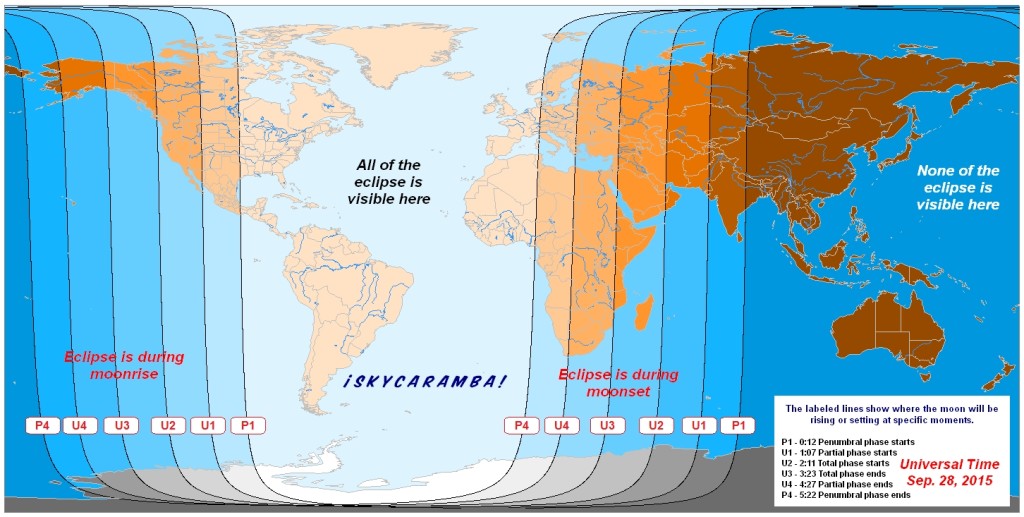¡SkyCaramba! Weekly astronomy blog for September 13 to 19, 2015
Get ready for a total lunar eclipse on September 28, 2015. Western Asia, most of Africa, and a lot of Europe will see part of the eclipse before the moon sets on the morning of the 28th.
Western Africa, western Europe, all of South America, and eastern North America can see all of the eclipse. In the Americas, the eclipse will actually start on the evening of the 27th.
Western North America and quite a lot of places in the Pacific Ocean will see the eclipse already in progress as the moon rises.
The very beginning of the eclipse is at 0:12 Universal Time. That’s when the moon enters Earth’s penumbra—the outer part of our planet’s shadow. For most people, that’s the least interesting part of the eclipse. The earth only partially blocks sunlight from reaching the moon. There’s still so much sunlight shining on the moon, you probably can’t tell anything’s different.
But at 01:07, your doubt is gone. A dark patch appears on one side of the moon. As the minutes go by, it gets bigger. That’s the part of the moon that has entered the umbra—the darkest part of Earth’s shadow where the only sunlight getting to it has refracted through Earth’s atmosphere.
The dark shadow grows until it has overtaken all of the moon’s disk at 2:11. For the next hour and 12 minutes, the moon continues moving through the shadow, maybe getting just a little darker until 2:48, which is the moment of greatest eclipse, and then getting just a little brighter until 3:23. That’s when the moon begins emerging from the umbra.
The dark shadow seems to shrink or recede until 4:27 when the last little bit of the moon that’s still in it comes out of it. Finally, the moon is entirely out of the penumbra at 5:22.
If you like this simulation, you may want to download the free program called Stellarium that was used to make it.
Another free program called Celestia shows us what the eclipse would look like if we could watch from space. In this simulation, the sun is behind us a little to the right. Of course, like the previous simulation, more than five hours of time has been compressed to just a few seconds.
If you want to convert these times to your local time zone or download a visibility map, please check out SkyCaramba.com. Also, look up SkyCaramba on Facebook, Twitter, YouTube, and Google Plus.
SkyCaramba!
